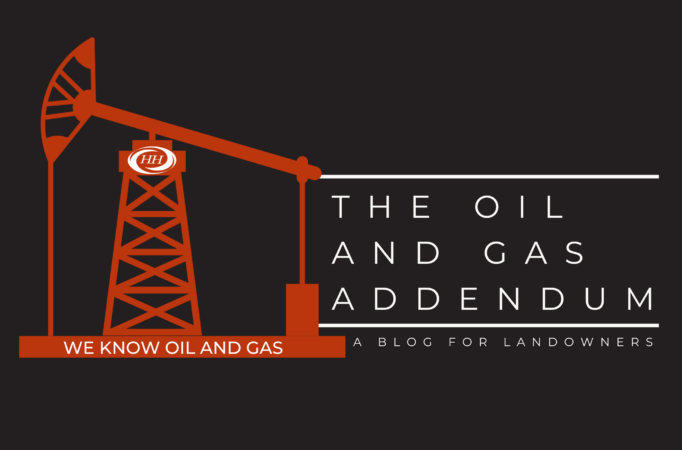The Oil and Gas Addendum
Is Pa. Becoming a First-Marketable-Product Jurisdiction?
Many landowners across Pennsylvania are experiencing sticker shock upon opening their first royalty statement. They have waited months, often years, to receive their first royalty. As they open the envelope, they envision paying off that mortgage, replacing that old tractor, finalizing their children’s college funds or possibly even retiring. This excitement soon evaporates as they read the royalty statement in disbelief.
Although they negotiated a 17 percent royalty, the payment itself is nowhere close to that. Instead, there are deductions for things such as dehydration, compression, gathering and marketing, which reduce the payment by thousands of dollars. They are frustrated, angry and confused. Can the gas driller deduct these costs from my royalty? The answer is yes, but that may soon change.
The public uproar over the practice of deducting post-production costs is now center stage in Harrisburg. On September 16, state Representative Garth Everett, R-Lycoming County, introduced HB 1684, which seeks to limit the ability of a gas driller to deduct such costs from the landowner’s production royalty. Section 1.4(a) of the bill prohibits a gas driller from deducting post-production costs “if such deductions result in a royalty of less than one-eighth calculated under the first-marketable-product doctrine.” HB 1684 represents a radical departure from existing Pennsylvania oil and gas law and is sure to spark a fierce and lively debate in Harrisburg. In order to better appreciate this debate, a brief examination of the historical treatment of post-production costs and the first-marketable-product doctrine is warranted.
The starting point for this examination is understanding the distinction between production costs and post-production costs.
It is well established that the gas driller bears all of the expenses of production. These expenses include such activities as seismic testing, drilling, hydraulic fracturing and well completion. The gas driller is therefore solely responsible for the cost of getting the gas to the surface, as in Kilmer v. Elexco Land Services, 990 A.2d 1147 (Pa. 2010), where the court held “the expenses of production relate to the costs of drilling the well and getting the product to the surface,” and Parker v. TXO Production, 716 S.W.2d 644 (Tex App. – Corpus Christi 1986), where the court held that “production costs are the expenses incurred in exploring for mineral substances and bringing them to the surface.” The royalty owner does not bear any of these costs.
Post-production costs, on the other hand, are those processing costs incurred between the well-head and the downstream point of sale. These expenses typically include the cost to dehydrate, separate, compress and transport the raw gas. For many years, these costs were not incurred by gas drillers, as they typically sold their gas to pipeline companies at the well-head. The pipeline companies then processed and transported the gas as per federal regulations. Since the point of sale was essentially at the well-head, calculating the value of the royalty was relatively straightforward and without controversy. This all changed in 1992.
On April 8, 1992, the Federal Energy Regulation Commission issued Order No. 636, which directed the pipeline companies to “unbundle” transportation services from their own gas sales operations and, in effect, “provide common-carriage services” to gas drillers. As a result of this deregulation, gas drillers, not the pipeline companies, now performed the processing, dehydrating and compression services. Moreover, the point of sale, which was formerly at the well-head, moved downstream to the interstate pipeline connection or some other delivery point. This had a profound effect on the manner in which production royalties were calculated.
The typical royalty clause provided that the landowner was entitled to a royalty based on the value of the gas “at the well” or “at the well-head.” This language became problematic because it presumed that the gas was still sold at the well-head. This was no longer true after deregulation — the point of sale was rarely at the well-head and was now further downstream and burdened with additional processing costs. As a result, gas drillers began utilizing two appraisal methods to calculate the value of the gas at the well-head: (1) the comparable sales method or (2) the workback or netback method.
Under the comparable sales method, the value of the gas at the well-head is calculated by averaging the prices that the driller and other producers have received in the same production field for gas of comparable quality and quantity. Evidence of comparable sales, however, is often difficult to ascertain, so the workback or netback method developed as the preferred alternative. Under this method, the value of the gas at the well-head is calculated by taking the downstream point of sale and subtracting the processing costs incurred between the well-head and the point of sale, as in Atlantic Richfield v. State, 262 Cal. Rptr. 683, 688 (Cal. Ctr. App. 1989), in which the court held that the royalty is calculated “by working back from the price of the point of sale, deducting the cost of processing and transportation from the well-head,” and Kilmer, which held that “we must work backward from the value-added price received at the point of sale by deducting the companies’ cost of turning gas into a marketable commodity.” Thus, when there is no actual market for gas at the well-head or when there is insufficient evidence of comparable sales, the netback method allows a driller to calculate the value of the gas at the well-head by subtracting the intervening process costs. Both methods assume that the royalty valuation point is at the well-head, even though the actual point of sale is further downstream.
A majority of oil and gas jurisdictions, including Pennsylvania, adhere to the “at the well” rule and calculate the royalty based on the value of the gas at the well-head, as in Bice v. Petro-Hunt, 768 N.W.2d 496 (N.D. 2009), which held that “the ‘at the well’ rule, allowing a lessee to deduct post-production costs prior to calculating royalty, is the majority rule.” Under this rule, processing costs incurred by the driller after the gas reaches the well-head, whether to improve the quality of the gas or to transport the gas to a downstream point of sale, may be deducted before the royalty is calculated. In these jurisdictions, the netback method is utilized to calculate the value of the gas at the well-head.
A minority of jurisdictions have rejected the comparable sales method and the netback method. These jurisdictions — Colorado, Kansas, Oklahoma and West Virginia — do not calculate the royalty based on the purported value of the gas at the well-head. Instead, these jurisdictions calculate the royalty at the point the gas first becomes a marketable product. This approach is commonly known as the first-marketable-product doctrine.
The analytical cornerstone of the doctrine is the implied covenant to market. This covenant requires the gas driller to proceed with due diligence to market the gas within a reasonable time, as in American Energy Services v. Lekan, 598 N.E.2d 1315 (Ohio Ct. App. 1992), which held that “the covenant to market the product places an obligation upon a lessee to use due diligence to market the gas.” Because the gas driller has an obligation to actually market the gas, the doctrine recognizes that the driller has a corresponding duty to also make the product marketable. This implies that the driller must assume all processing costs. Under this approach, the driller is solely responsible for incurring any costs necessary to make the gas marketable, as in Rogers v. Westerman Farm, 29 P.3d 887 (Colo. 2001), which held that “because the lessees had a duty to make the product marketable, they alone must bear any expenses incurred in order for the gas to reach that marketable condition,” and Coulter v. Anadarko Petroleum, 292 P.3d 289 (Kansas 2013), which held that the driller must “bear the entire cost of putting the gas in condition to be sold.” Once the gas is in a marketable condition, the doctrine allows the driller to deduct the subsequent costs to transport or enhance the marketable product.
Unlike the majority rule, the first-marketable-product doctrine calculates the royalty at the point the gas becomes marketable. Gas is rarely marketable at the well-head and often requires some processing. As such, in states that have adopted the doctrine, the royalty is generally calculated without any deductions for processing or treating the gas, as in Sternberger v. Marathon Oil, 894 P.2d 788 (Kansas 1995), which held that a royalty owner is not obligated to bear “any share of … compressing, transporting and marketing undertaken to transform gas into a marketable product.”
When does the gas become a marketable product? This can be a thorny question. Colorado courts have defined marketability as when the gas “is in the physical condition such that it is acceptable to be bought and sold in a commercial marketplace,” as in Rogers. Identifying exactly when the gas becomes a marketable product is fact-intensive and controversial.
The pending legislation, although a bold step in the right direction, does not identify or define when the gas becomes a marketable product. Even courts that have adopted the doctrine struggle with this concept. Landowners and gas drillers alike should closely monitor HB 1684 as it makes its way through the legislative process. Clarifying when the gas becomes a marketable product, as well as the royalty valuation point, will benefit all stakeholders.
About Us
Oil and gas development can present unique and complex issues that can be intimidating and challenging. At Houston Harbaugh, P.C., our oil and gas practice is dedicated to protecting the interests of landowners and royalty owners. From new lease negotiations to title disputes to royalty litigation, we can help. Whether you have two acres in Washington County or 5,000 acres in Lycoming County, our dedication and commitment remains the same.
We Represent Landowners in All Aspects of Oil and Gas Law
The oil and gas attorneys at Houston Harbaugh have broad experience in a wide array of oil and gas matters, and they have made it their mission to protect and preserve the landowner’s interests in matters that include:
- New lease negotiations
- Pipeline right-of-way negotiations
- Surface access agreements
- Royalty audits
- Tax and estate planning
- Lease expiration claims
- Curative title litigation
- Water contamination claims

Robert Burnett - Practice Chair
Robert’s practice is exclusively devoted to the representation of landowners and royalty owners in oil and gas matters. Robert is the Chair of the Houston Harbaugh’s Oil & Gas Practice Group and represents landowners and royalty owners in a wide array of oil and gas matters throughout the Commonwealth of Pennsylvania. Robert assists landowners and royalty owners in the negotiation of new oil and gas leases as well as modifications to existing leases. Robert also negotiates surface use agreements and pipeline right-of-way agreements on behalf of landowners. Robert also advises and counsels clients on complex lease development and expiration issues, including the impact and effect of delay rental and shut-in clauses, as well as the implied covenants to develop and market oil and gas. Robert also represents landowners and royalty owners in disputes arising out of the calculation of production royalties and the deduction of post-production costs. Robert also assists landowners with oil and gas title issues and develops strategies to resolve and cure such title deficiencies. Robert also advises clients on the interplay between oil and gas leases and solar leases and assists clients throughout Pennsylvania in negotiating solar leases.

Brendan A. O'Donnell
Brendan O’Donnell is a highly qualified and experienced attorney in the Oil and Gas Law practice. He also practices in our Environmental and Energy Practice. Brendan represents landowners and royalty owners in a wide variety of matters, including litigation and trial work, and in the preparation and negotiation of:
- Leases
- Pipeline right of way agreements
- Surface use agreements
- Oil, gas and mineral conveyances

